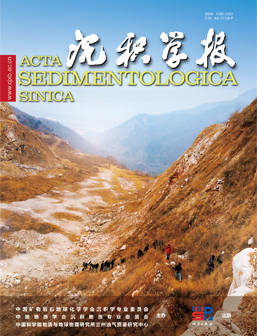The origin of the pre-salt Ordovician fluid and its significance for hydrocarbon accumulation in Wushenqi area
doi: 10.14027/j.issn.1000-0550.2023.136
- Received Date: 2023-09-14
- Available Online: 2024-01-05
-
Key words:
- hydrocarbon accumulation /
- fluid inclusion /
- fluid source /
- geochemical characteristics /
- calcite veins /
- Wushenqi area /
- Ordos basin
Abstract: Calcite containing hydrocarbon and asphalt inclusions developed in the Ordovician Majiagou Formation subsalt carbonate reservoir in the Wusenqi area of Ordos Basin, which is an important indicator of fluid source and hydrocarbon accumulation process. Through core observation, rock thin section identification, cathodoluminescence, rare earth elements, C, O, Sr isotopes, microfluorescence and laser Raman spectroscopy analysis, the calcite development stages were divided, the sources of vein forming fluids were analyzed, and the fluid inclusions were studied to reveal the significance of hydrocarbon activities on oil and gas accumulation. The results show that 4 stages of calcite veins (C1, C2, C3, C4) are developed in the carbonate reservoir in Wushenqi area, and the characteristics and sources of secondary calcite veins are different in different periods. The C1 and C4 vein forming fluids are derived from the dissolved surrounding rocks, and their isotopes of strontium carbon and oxygen are consistent with those of Ordovician seawater, and the rare earth partition pattern is characteristic of seawater. C2 calcite veins have very negative carbon isotope values, high 87Sr/86Sr values and total rare earth content, positive Eu anomaly, and the fluid comes from external fluids. C3 calcite has a negative carbon isotope value, higher 87Sr/86Sr values and total rare earth content, and the fluid is derived from external fluids. In addition, asphaltic inclusions developed on calcite veins of C2 and C3 stages, indicating that oil and gas cracked after entering the reservoir. The geochemical characteristics of calcite veins in the study area provide a theoretical basis for oil and gas accumulation in Ordos Basin and other basins.
| Citation: | The origin of the pre-salt Ordovician fluid and its significance for hydrocarbon accumulation in Wushenqi area[J]. Acta Sedimentologica Sinica. doi: 10.14027/j.issn.1000-0550.2023.136 |






 DownLoad:
DownLoad: